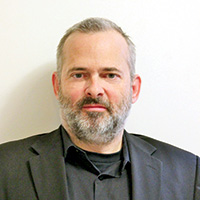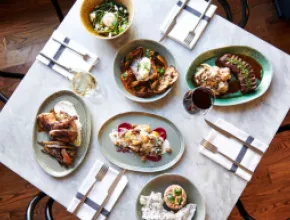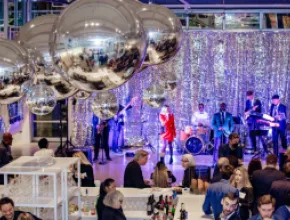Relatively young as the nation’s 46th state, Oklahoma, taken from the Choctaw Nation words “okla” (“people”) and “humma” (“red”), has history and heritage reaching back centuries.
Most sharply defining were the decades preceding the 1907 merger into statehood of its “Twin Territories,” the Indian and Oklahoma territories. Onward from 1830, the Choctaw were among the many Southeastern tribes forcibly relocated to Oklahoma under the Indian Removal Act, or the Trail of Tears.
In 1889, “boomers” rushed to claim Unassigned Lands, or portions of territory originally set aside for tribal nations by treaty but then withdrawn. Each “Land Run” began with a pistol shot; those jumping the gun were called Sooners, giving Oklahoma its nickname.
Neighboring Texas has flown under six flags; Oklahoma today is a state of 39 tribes and nations living not on reservations, but in territories, including the Choctaw, who valiantly served as “code talkers” in World War I and again in World War II, Korea and Vietnam.
Against this poignant legacy, Native American culture, found in museums, heritage sites and major events such as the summertime three-day Red Earth Native American Cultural Festival in Oklahoma City, is among many vital touchpoints in Oklahoma’s layered, complex and often deeply moving past.
Oklahoma City
State capital since 1910 following transfer from Guthrie, cosmopolitan Oklahoma City comes with an authentic Western legacy and many tales to tell.
“Historic and heritage experiences are so important for groups seeking to understand a destination,” said Dennis Johnston, vice president of sales for the Oklahoma City CVB. “Defining events for our city include the Trail of Tears, Land Run of 1889, oil boom of the 1980s and of course the Murrah Building bombing in 1995,” he continued. “To see where we are today is quite moving—this is our story and we want to tell it.”
With the event-capable Oklahoma History Center providing an ideal introduction to the state’s richly layered past, the National Cowboy & Western Heritage Museum is the nation’s premier institution of Western history, art and culture.
Its collection broadly ranging from fine art to fine firearms, the museum is home to the Rodeo Hall of Fame, which inducted cowboys and cowgirls since the museum opened in 1955. Rental facilities include the 16,500-square-foot Sam Noble Special Events Center, featuring five triptychs depicting Western scenes and accommodating 1,000 banquet guests, and Prosperity Junction, a re-created cattle town hosting cocktail receptions for 150 people.
Since 1928, each November sees new inductees into the Oklahoma Hall of Fame at the Gaylord-Pickens Museum. With Oklahoma City Thunder guard Russell Westbrook among six men and women inducted in 2016, the Hall now counts 669 members. Telling Oklahoma’s story through its people, the museum’s elegant spaces include the front steps, garden (with two 40-foot cascading walls of water) and new 300-person capacity Bennett-McClendon Great Hall.
Featuring more than 400 instruments, many from the Jazz Age, recordings, film and other memorabilia, the American Banjo Museum offers rental options, all with access to galleries and exhibits, included full buyouts for 200-person evening receptions.
Offering 18,500 square feet of function space, the landmark 225-room Skirvin Hilton Hotel, opened in 1911, mixes modernity with a restored original facade. Grand, too, is the National Historic Register-listed Farmers Public Market. Offering 14,000 square feet of versatile space for parties of 200 to 1,500 guests, this 1928-era time capsule features 15-foot windows, an original wooden dance floor and 1930s Art Deco full-service bar.
About 150 miles south of Oklahoma City, Durant is headquarters of the Choctaw Nation of Oklahoma and home to one of eight Chocktaw Casino Resorts across southeastern Oklahoma. The AAA Four Diamond Durant location offers 776 rooms, including the stunning new 286-room Spa Tower, and 20,000 square feet of versatile group space in 16 rooms, including the 14,000-square-foot Magnolia Grand Ballroom.
PageBreak
Norman
Some 20 miles south of Oklahoma City, Norman, home of the University of Oklahoma, is grounded in state heritage and tradition.
“Along with the university footprint, Norman, the third-largest city in the state, values its history, arts and culture, which creates a wide variety of options that will hit the right note for any group,” said VisitNorman Executive Director Dan Schemm.
Established by the Oklahoma Territorial legislature in 1890, the original University of Oklahoma burned to the ground in 1903. Reflecting the school’s “can-do” Sooner spirit, a mathematics professor reportedly said, “What do you need to keep classes going? Two yards of blackboard and a box of chalk.”
Rebuilt in what Frank Lloyd Wright christened the “Cherokee Gothic” style, the campus today offers a trove of inspiring conference and event venues.
Considered a crown jewel, the 1928 Oklahoma Memorial Union includes a 6,500-square-foot ballroom as part of 25,000-plus square feet of versatile space. Featuring the largest collection of Impressionist paintings at a public university, the free-admission Fred Jones Jr. Museum of Art hosts up to 2,000 people for buyout events, with more intimate options including the grand Sandy Bell Gallery. The Sam Noble Oklahoma Museum of Natural History hosts corporate and social functions in versatile spaces such as the W.R. Howell Pleistocene Plaza, which features a giant bronze mammoth.
Other Norman treasures include the National Historic Register-listed Santa Fe Depot, still operating as an Amtrak stop and an evocative choice for after-hours events and receptions.
Shawnee
Another Santa Fe Depot beckons in this historic destination about 40 miles east of Oklahoma City. Built in 1904, the station is now the Pottawatomie County Museum, offering docent-led tours of frontier-era and other historic items collected since 1926. Adjacent Centennial Park features a monument to Shawnee native Louise Fluke, who designed the state flag.
“The museum is one of the most photographed places in town,” said Emily Lutz, Visit Shawnee’s new interim president and CEO. “Heritage-wise, Shawnee’s deep Native American roots provide unique learning opportunities for groups. At the Citizen Potawatomi Nation (CPN) Cultural Heritage Center, under renovation and reopening this spring, visitors can learn about Potawatomi history and culture, and by appointment, tour CPN’s rescue center for injured eagles.”
Docent-led tours of the Mabee-Gerrer Museum of Art showcase the state’s sole collection of Egyptian mummies and art from across the ages.
Tulsa
Located in Tulsa’s Muscogee (Creek) Nation Council Oak Park, the national historic landmark Creek Council Oak Tree marks the end of the Trail of Tears for the displaced tribes first arriving here in 1836. For what was originally called Tallahassee, then Tulsey Town and finally Tulsa in 1879, it’s a fitting symbol for a city of living history.
As noted by Tulsa CVB Vice President Vanesa Masucci, “we are fortunate to offer so many top heritage location options to prospective meeting planners and travelers.”
Agenda-ready attractions include tours of the city’s “Deco District” with The Tulsa Foundation for Architecture.
“Tulsa’s oil barons wanted to rival cities in the East in the arts, music and culture—and architecture,” explained Masucci. “With the world’s third-largest collection of Art Deco buildings after New York City and Miami, these tours, which include connecting underground tunnels, are a must for visitors.”
Deeply revealing, too, are guided tours of The Greenwood District. Attracting educated and affluent African-Americans in the early 1900s, the prosperous “Black Wall Street” became the scene of the racially motivated Tulsa Race Riot of 1921. One of the worst civic disturbances in U.S. history, with some 300 fatalities, the event is memorialized at the event-capable Tulsa Historical Society & Museum, and at the John Hope Franklin Reconciliation Park.
Oklahoma features the longest drivable portion of historic Route 66, and thanks to adopted Tulsan Cyrus Stevens Avery, widely thought of as the “Father of Route 66,” a colorful portion runs along Tulsa’s 11th Street. Here, the meetings-capable Campbell Hotel, dating to 1927 and redeveloped in 2011, features 26 uniquely themed rooms, including the Route 66 Suite.
In Claremore, about 30 miles east of Tulsa, the event-capable Will Rogers Memorial Museum honors “America’s Cowboy Philosopher.” Born to Cherokee parents just to the north in Oologah, the beloved writer, entertainer and philanthropist’s sprawling lakeside Birthplace Ranch is a scenic option for corporate events and other gatherings.







